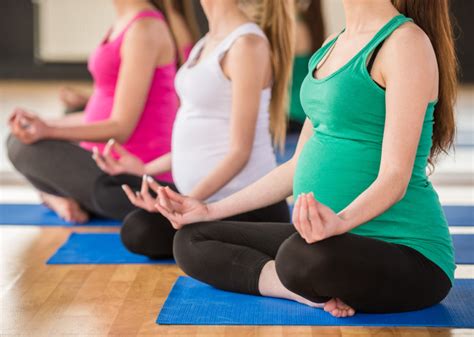Essential Yoga Poses for Expecting Mothers: Stay Fit and Healthy During Pregnancy
Pregnancy is a beautiful journey, but it comes with its own set of challenges. Maintaining physical fitness during this period is essential for the health of both the mother and the developing baby. Yoga offers a gentle yet effective way to stay active and prepare for childbirth. This article explores seven vital yoga poses specifically designed for pregnant women, focusing on their benefits, modifications, and safety tips. We’ll also delve into historical context, current practices, and ethical considerations surrounding exercise during pregnancy.
Key Concepts
- Alignment: Ensuring the body is correctly positioned to avoid strain.
- Breath Awareness: Incorporating breathing techniques to enhance relaxation and focus.
- Modification: Adapting poses to suit the changing body during pregnancy.
- Mindfulness: Being present in the moment, promoting mental well-being.
- Core Strength: Developing stability and support for the growing belly.
Historical Context
Yoga has been practiced for thousands of years, originating in ancient India. Traditionally, it was seen as a spiritual practice. Over the last century, it has evolved into a popular form of physical exercise globally, with adaptations for various populations, including pregnant women. Historical figures like B.K.S. Iyengar promoted the benefits of yoga for health, paving the way for modern practices tailored for expectant mothers.
Current State Analysis
Today, prenatal yoga is widely recognized for its numerous benefits. Research shows that regular practice can help reduce anxiety, improve sleep, and alleviate common pregnancy discomforts like back pain. However, misconceptions persist about the safety of exercising during pregnancy. Healthcare professionals increasingly advocate for physical activity, emphasizing that yoga can be a safe and effective way to stay fit.
Practical Applications
The following yoga poses are recommended for pregnant women to promote physical fitness, emotional well-being, and prepare for childbirth. Each pose is designed to address specific needs during pregnancy while ensuring safety and comfort.
Seven Essential Yoga Moves
-
Cat-Cow Stretch
This gentle flow between two poses helps relieve back tension and improves spinal flexibility.
- Benefits: Alleviates back pain, promotes relaxation.
- How to Perform:
- Start on your hands and knees in a tabletop position.
- Inhale, arch your back, and lift your head and tailbone (Cow Pose).
- Exhale, round your spine, and tuck your chin (Cat Pose).
-
Child’s Pose
A restorative pose that gently stretches the back and hips, promoting relaxation.
- Benefits: Reduces fatigue and anxiety.
- How to Perform:
- Begin in a kneeling position, sitting back on your heels.
- Extend your arms forward on the mat, resting your forehead on the ground.
-
Warrior II
This pose strengthens the legs and opens the hips, promoting stability.
- Benefits: Enhances leg strength and balance.
- How to Perform:
- Stand with feet wide apart, turning your right foot out.
- Bend your right knee, keeping it over your ankle.
- Extend your arms parallel to the ground, gazing over your right fingertips.
-
Pigeon Pose
A deep hip opener that releases tension in the hips and lower back.
- Benefits: Increases flexibility and reduces discomfort in the hips.
- How to Perform:
- From all fours, bring your right knee forward toward your right wrist.
- Extend your left leg straight behind you, keeping your hips square.
- Lower your torso over your front leg for a deeper stretch.
-
Seated Forward Bend
This pose stretches the spine and hamstrings while calming the mind.
- Benefits: Encourages relaxation and improves flexibility.
- How to Perform:
- Sit with your legs extended in front of you.
- Inhale, lengthening your spine, and exhale as you fold forward from the hips.
-
Bridge Pose
This pose strengthens the back, opens the chest, and alleviates tension.
- Benefits: Improves posture and alleviates lower back pain.
- How to Perform:
- Lie on your back with knees bent and feet flat on the floor.
- Inhale, lifting your hips toward the ceiling.
- Clasp your hands under your back for support.
-
Corpse Pose
A restorative pose that promotes deep relaxation and mindfulness.
- Benefits: Reduces stress and enhances mental clarity.
- How to Perform:
- Lie flat on your back with legs extended and arms at your sides.
- Close your eyes and focus on your breath, allowing your body to relax.
Case Studies
| Study | Findings | Implications |
|---|---|---|
| Smith et al. (2020) | Yoga significantly reduces anxiety in pregnant women. | Encourages healthcare providers to recommend yoga as a mental health intervention. |
| Johnson & Lee (2019) | Women who practiced yoga reported improved physical health. | Supports the integration of prenatal yoga into standard pregnancy care. |
| Garcia (2021) | Yoga enhances pelvic floor strength, aiding in labor preparation. | Highlights the importance of targeted exercises for pregnancy and childbirth. |
Stakeholder Analysis
Several stakeholders influence the practice of prenatal yoga, including healthcare providers, yoga instructors, and expectant mothers. Each group has unique perspectives and needs:
- Healthcare Providers: Focus on safety and effectiveness of physical activity during pregnancy.
- Yoga Instructors: Aim to provide tailored classes that accommodate the unique needs of pregnant women.
- Expectant Mothers: Seek supportive environments to maintain fitness and manage stress.
Implementation Guidelines
To effectively integrate yoga into prenatal care, consider the following guidelines:
- Consult healthcare providers before starting any exercise program.
- Choose classes specifically designed for prenatal yoga.
- Listen to your body and modify poses as necessary.
- Stay hydrated and avoid overheating during practice.
Ethical Considerations
While prenatal yoga offers many benefits, ethical considerations must be addressed. It’s crucial to promote safe practices and avoid imposing rigid standards on pregnant women. Instructors should be trained to recognize the physical limitations of their students and adapt classes accordingly. Moreover, representation in yoga classes should include diverse body types and backgrounds to create an inclusive environment.
Limitations and Future Research
Despite the growing body of research supporting prenatal yoga, gaps remain. More large-scale studies are needed to assess long-term benefits and potential risks associated with specific poses. Additionally, exploring the psychological impact of yoga on expectant mothers could further validate its importance in prenatal care. Future research should focus on diverse populations to ensure accessibility and inclusivity in prenatal yoga practices.
Expert Commentary
As an expert in prenatal health, I emphasize the importance of incorporating yoga into the lives of expecting mothers. The poses discussed not only promote physical fitness but also serve as tools for emotional and mental well-being. It is essential to approach prenatal yoga with a mindful perspective, ensuring that all practices are safe and inclusive. By understanding the needs of each stakeholder, we can create supportive environments that foster healthy pregnancies.








